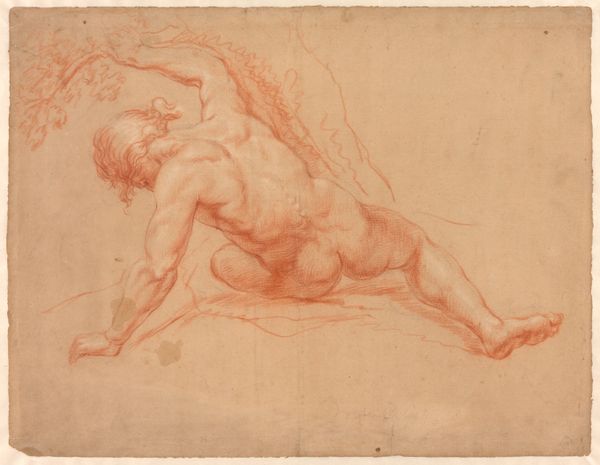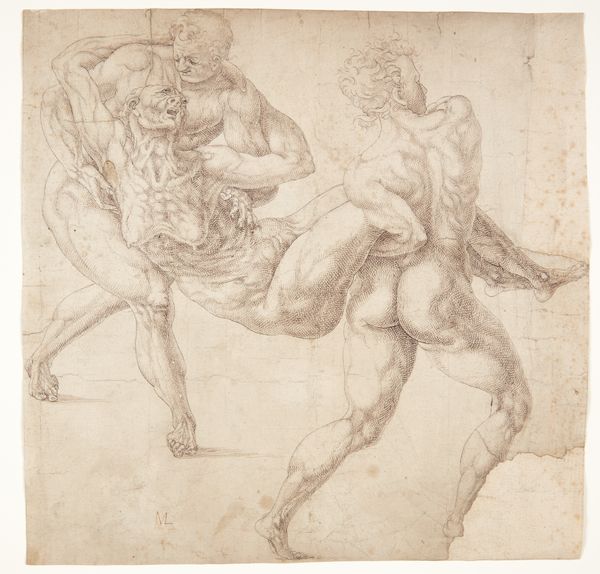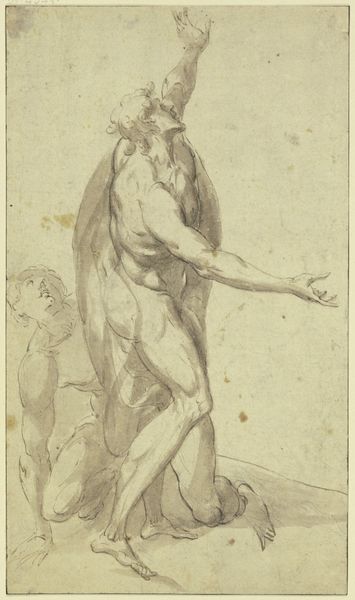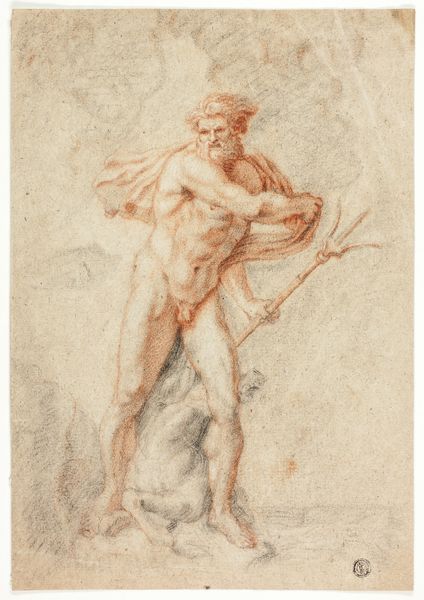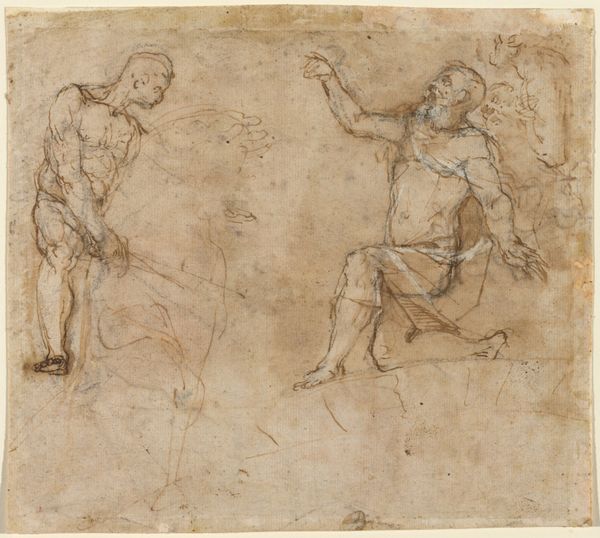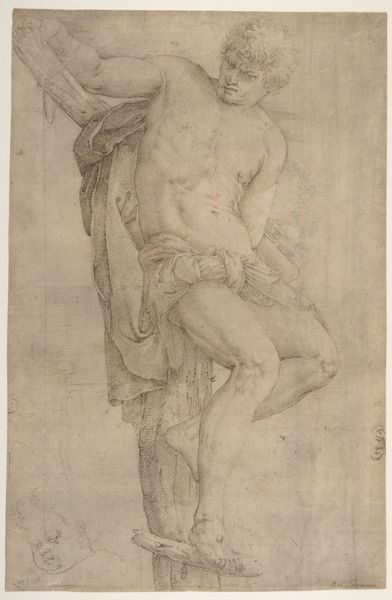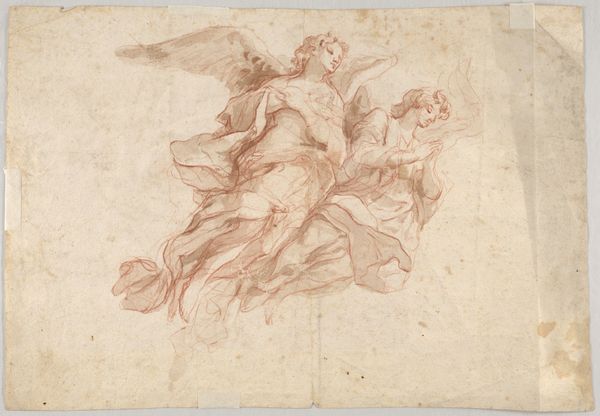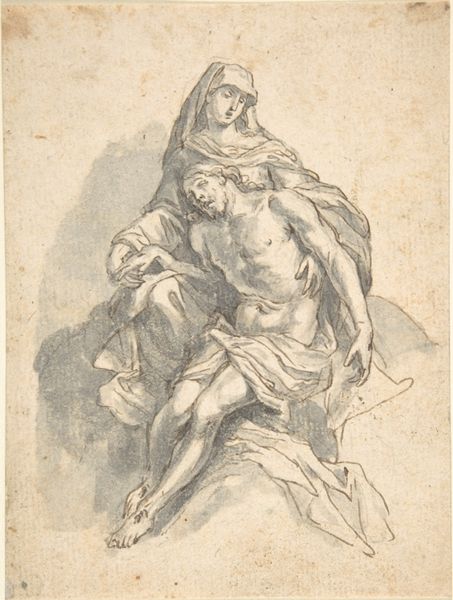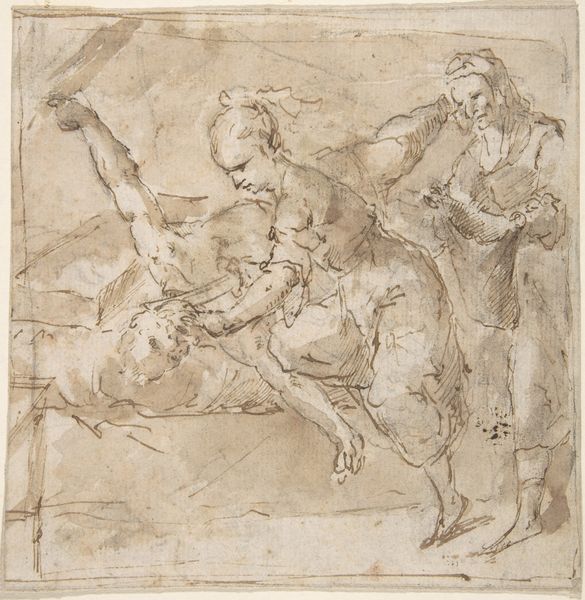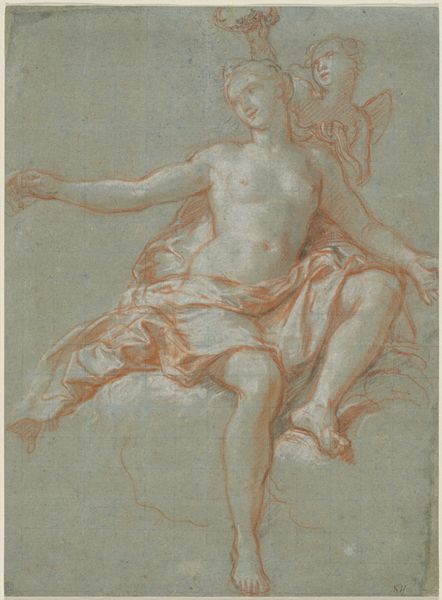![Seated Male Nude [recto] by Agostino Carracci](/_next/image?url=https%3A%2F%2Fd2w8kbdekdi1gv.cloudfront.net%2FeyJidWNrZXQiOiAiYXJ0ZXJhLWltYWdlcy1idWNrZXQiLCAia2V5IjogImFydHdvcmtzLzcwMWE3ZjI1LWZlYjctNGQyMi05OTk1LTRlZjIzYTM1ZmM1YS83MDFhN2YyNS1mZWI3LTRkMjItOTk5NS00ZWYyM2EzNWZjNWFfZnVsbC5qcGciLCAiZWRpdHMiOiB7InJlc2l6ZSI6IHsid2lkdGgiOiAxOTIwLCAiaGVpZ2h0IjogMTkyMCwgImZpdCI6ICJpbnNpZGUifX19&w=3840&q=75)
drawing, paper, ink
#
portrait
#
drawing
#
mannerism
#
figuration
#
paper
#
form
#
11_renaissance
#
ink
#
line
#
academic-art
#
nude
Dimensions: Overall: 16.8 x 17.5 cm (6 5/8 x 6 7/8 in.) support: 17.8 x 18.2 cm (7 x 7 3/16 in.)
Copyright: National Gallery of Art: CC0 1.0
Editor: This is "Seated Male Nude," a pen and ink drawing on paper by Agostino Carracci, dating from about 1600 to 1602. I’m immediately struck by the dynamic pose and the incredibly detailed linework. It seems so full of energy despite being a seated figure. What aspects of this work stand out to you? Curator: Indeed, the dynamism you observe is compelling. Consider the deliberate contrast between the agitated lines delineating the figure's musculature and the relatively still, undefined background. This contrast is critical to the drawing's semiotic structure. The undulating lines lend to a tactile effect of fleshiness that one might expect from Academic art training from this period, perhaps an investigation into form over naturalism. Editor: So you’re saying the way Carracci uses line emphasizes the form, almost dissecting and highlighting its muscularity? Is it meant to be idealised or expressive? Curator: A question well-posed! Observe that the muscular definition is quite overt, exaggerating to a degree perhaps for dramatic effect. Is the figure an attempt to mirror idealized human form or does it present something beyond nature? One can scrutinize how line, tone, and weight collaborate to build the human figure into something monumental in scale and presence. Editor: It feels almost like a preparatory sketch for a larger painting or sculpture, focusing on mastering the human form. I’m beginning to see it less as a finished drawing and more as a study in artistic language. Curator: Precisely. To understand its structure— the drawing may invite contemplation on the preparatory processes and conventional art of Mannerism, thus broadening appreciation beyond simple aesthetics to considering theoretical and conceptual underpinnings. Editor: Thanks for that perspective, looking at it that way completely changes how I see the intention behind Carracci's use of line and form!
Comments
No comments
Be the first to comment and join the conversation on the ultimate creative platform.
